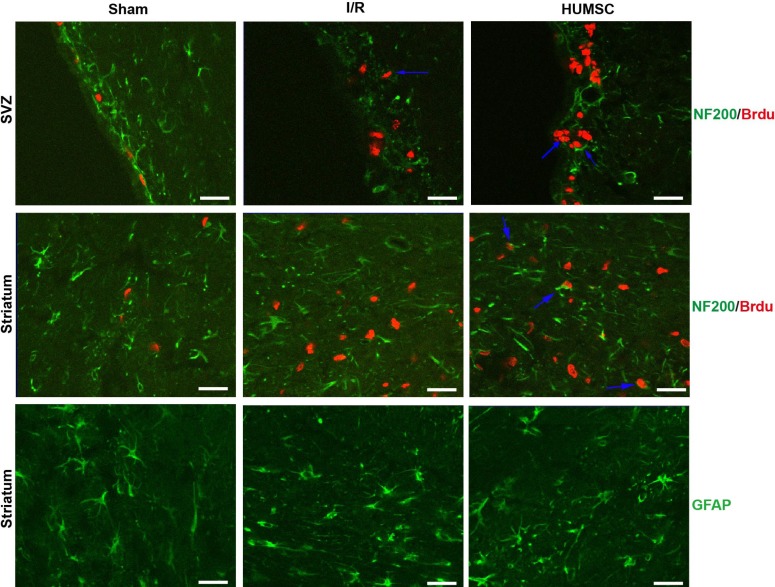Figure 2.
Intravenous administration of HUMSCs increased endogenous neural regeneration after cerebral I/R injury. Since there was no migration and implantation of HUMSCs in rats treated with HUMSCs, endogenous neural regeneration was studied using immunofluorescence double staining with neurofilament 200 (NF200) and BrdU in brain sections 14 d after surgery. Cells double-stained with NF200 and BrdU were not evident in brains sections from sham-operated rats. Cells double-stained with NF200 and BrdU were evident in the SVZ but not in the striatum of brain sections from untreated rats with cerebral I/R injury. As expected, neuronal cells double-stained with NF200 and BrdU were evident in both the SVZ and striatum of brains from rats treated with HUMSCs. Intravenous administration of HUMSCs attenuated astrocyte activation after cerebral I/R injury. Glial fibrillary acidic protein (GFAP) was used as an immunofluorescence marker of astrocyte activation in the striatum of rats. Untreated rats with cerebral I/R injury had a greater number of GFAP-positive cells than did sham-operated rats and rats treated with HUMSCs had fewer GFAP-positive cells than did untreated rats with cerebral I/R injury.

